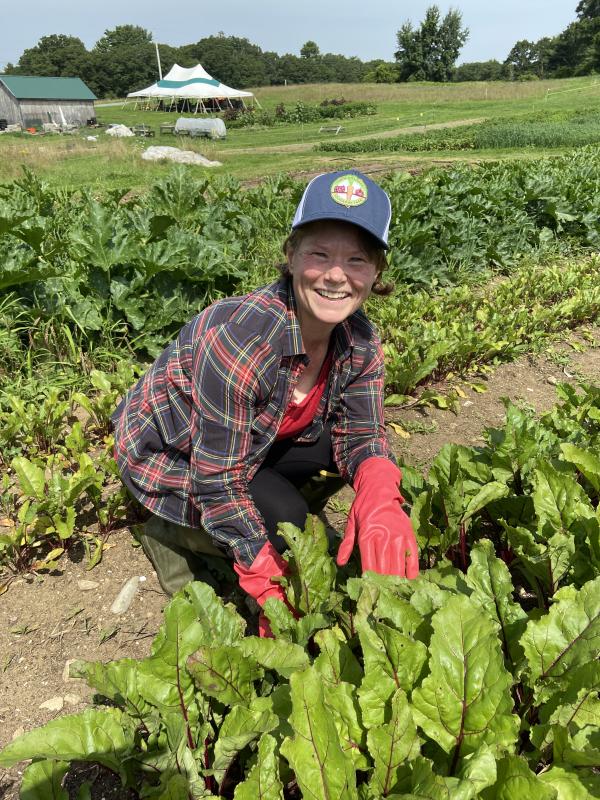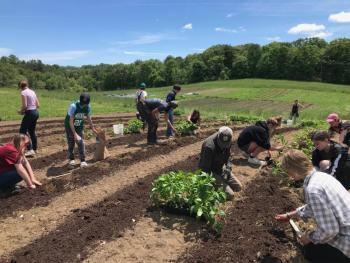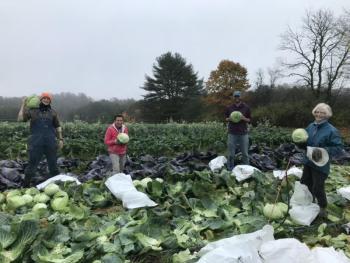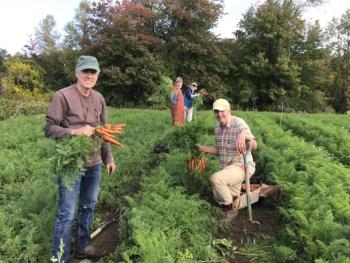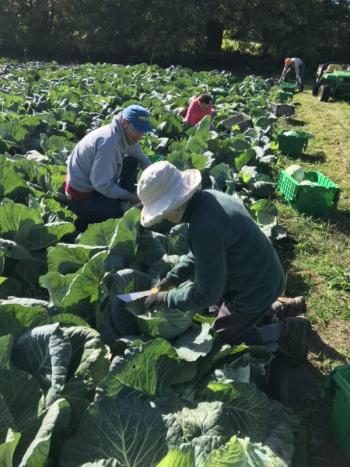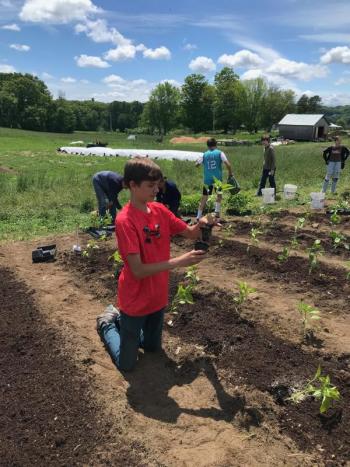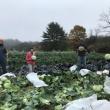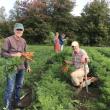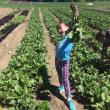By and for the community
As the world faces challenges of poverty, food insecurity, and hunger, a new type of farm is emerging to help tackle these problems. Foodbank farms are not-for-profit organizations that provide fresh produce to those in need, and promote sustainable agriculture and community development, according to Mainers Feeding Mainers, a program by Good Shepherd Food Bank that partners with farms to grow food for local food banks.
Twin Villages Foodbank Farm (TVFF), founded in 2015 by Sara Cawthon and Megan Taft, in partnership with Coastal Rivers Conservation Trust, is one of 80 farms partnered with Mainers Feeding Mainers. With three acres under cultivation, the farm averages 50,000 pounds of fresh vegetables annually for immediate distribution into Lincoln County’s food system, and further aggregates another 20,000 pounds from other local sources to be added to the Lincoln County food pipeline, according to Cawthon.
Foodbank farms do not sell produce to the public or offer harvest shares through community supported agriculture (CSA's). Rather, their business model directly supplies food to foodbanks and other food security organizations. TVFF serves seven area food pantries and five non-profit organizations, said Cawthon. By growing the food and providing it to these organizations, TVFF supplements the diets of those struggling with food security.
The U.S. Department of Agriculture’s Farm Bill offers $4 million annually, divided over thousands of foodbank farms across the country, through grant programs. Most funding for foodbank farms comes from other hunger fighting nonprofits, private family foundations, corporate sponsors, and individual contributions, according to Feeding America, the nation’s largest network for the cause.
The Farms section of Maine’s Climate Action Plan lists a goal to increase the amount of food consumed in Maine from state food producers from 10% to 20% by 2025 and 30% by 2030 through local food system development.
Through grant writing and financial support from the community, in 2018 TVFF added a cold storage unit in Darrow’s Barn at Round Top Farm, larger than their needs, offering surplus space for other growers, producers, and food distributors to use. “The hub is working just as we’d hoped,” said Cawthon. “Shaw’s, Hannaford, Rising Tide Co-op, the YMCA, and several others routinely use it.”
The addition of the walk-in cooler stores farm bounties when space is limited and keeps vegetables fresh longer into the winter months when pantry demands increase and farm production decreases, Cawthon explained.
The farm grows a variety of vegetables, favoring ones that are high calorie, high yield per square foot and suited for winter storage so the farm can continue to supply fresh vegetables to those in need well into the winter months. Cawthon said TVFF typically makes it through January before running out of produce.
Foodbank farms often provide educational programs to schools and community members interested in growing their own food. Cawthon described watching fifth through eighth graders take ownership of their volunteer jobs on the farm. She said the students know the work was not made up for them, that it has tangible results and is helping people. The farm fully trusts the students to harvest a thousand pounds of carrots, “which is a huge help to a farm that employs just three people,” she said.
Cawthon estimated the farm has hundreds of student volunteers and dozens of community members volunteering annually. “It’s common to have 10 groups of volunteers weekly, May through December.”
“Digging in to feed one another” is a catch phrase at the farm. Steven Hufnagel, executive director at Coastal Rivers Conservation Trust, states on TVFF’s website, “the opportunity to reestablish crop production at the farm is a powerful reminder that the health of our lands, water and people are closely linked.”






